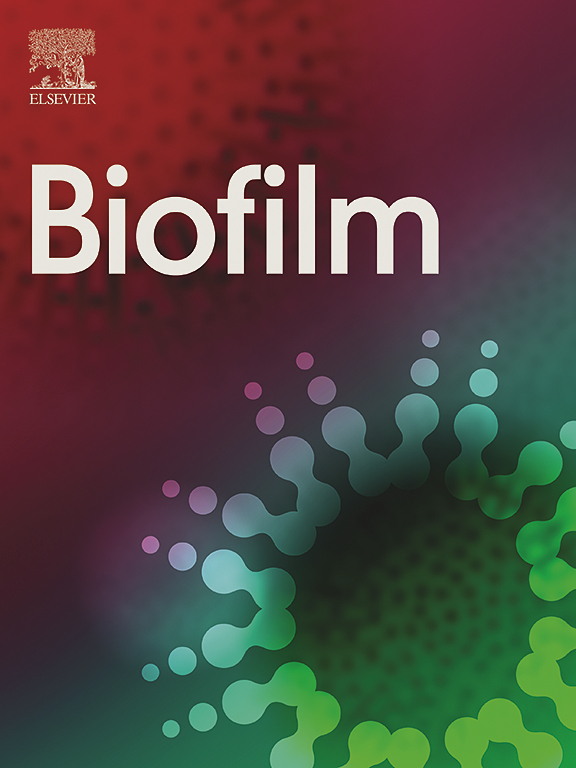Cellulophaga algicola alginate lyase and Pseudomonas aeruginosa Psl glycoside hydrolase inhibit biofilm formation by Pseudomonas aeruginosa CF2843 on three-dimensional aggregates of lung epithelial cells
IF 4.9
Q1 MICROBIOLOGY
引用次数: 0
Abstract
Pseudomonas aeruginosa is an opportunistic pathogen that produces a biofilm containing the polysaccharides, alginate, Psl, and Pel, and causes chronic lung infection in cystic fibrosis patients. Others and we have previously explored the use of alginate lyases in inhibiting P. aeruginosa biofilm formation on plastic and lung epithelial cell monolayers. We now employ a more physiologically representative model system, i.e., three-dimensional aggregates of A549 lung epithelial cells cultured under conditions of microgravity in a rotary cell culture system to mimic the natural lung environment, and a previously isolated clinical strain, Pseudomonas aeruginosa CF2843 that we engineered by transposon-mediated integration to express Green Fluorescent Protein and for which we also report the complete genome sequence. Immunostaining and lectin binding studies indicated that the three-dimensional cell aggregates harbored sialylated and fucosylated epitopes as well as Muc1, Muc5Ac, and β-catenin on their surfaces, suggestive of mucin secretion and the presence of tight junctions, hallmark features of lung epithelial tissue. Using this validated model system with confocal microscopy and viable bacterial counts as readouts, we demonstrated that Cellulophaga algicola alginate lyase and Pseudomonas aeruginosa Psl glycoside hydrolase, but not Pseudomonas aeruginosa Pel glycoside hydrolase, inhibit biofilm formation by Pseudomonas aeruginosa on three-dimensional lung epithelial cell aggregates.
海藻酸解酶和铜绿假单胞菌Psl糖苷水解酶抑制铜绿假单胞菌CF2843在肺上皮细胞三维聚集体上形成生物膜
铜绿假单胞菌是一种条件致病菌,可产生含有多糖、海藻酸盐、Psl和Pel的生物膜,可引起囊性纤维化患者的慢性肺部感染。其他人和我们之前已经探索了海藻酸盐裂解酶在抑制塑料和肺上皮细胞单层上铜绿假单胞菌生物膜形成中的应用。我们现在采用了一种更具生理学代表性的模型系统,即在微重力条件下在旋转细胞培养系统中培养的A549肺上皮细胞的三维聚集体来模拟自然肺环境,以及先前分离的临床菌株,铜绿假单胞菌CF2843,我们通过转座子介导的整合来表达绿色荧光蛋白,我们也报告了其完整的基因组序列。免疫染色和凝集素结合研究表明,三维细胞聚集体在其表面含有唾液化和聚焦的表位以及Muc1、Muc5Ac和β-catenin,提示粘蛋白分泌和紧密连接的存在,这是肺上皮组织的标志特征。利用共聚焦显微镜和活菌计数的验证模型系统,我们证明了海藻酸纤维素分解酶和铜绿假单胞菌Psl糖苷水解酶,而不是铜绿假单胞菌Pel糖苷水解酶,可以抑制铜绿假单胞菌在三维肺上皮细胞聚集体上形成生物膜。
本文章由计算机程序翻译,如有差异,请以英文原文为准。
求助全文
约1分钟内获得全文
求助全文

 求助内容:
求助内容: 应助结果提醒方式:
应助结果提醒方式:


